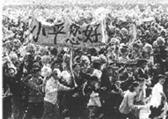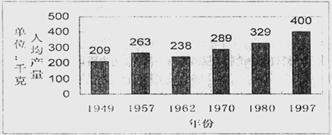Holiday Inns and McDonald’s. both saw unmatched growth in the 1960s. Their growth opened another direct business operation—franchising.
These operations have the same general pattern. The franchisor, the parent company, first establishes a successful retail business. As it expands, it sees a profit potential in offering others the right to open similar business under its name. The parent company’s methods and means of identification with consumers are included in this right. The parent company supplies skill, and may build and rent stores to franchisees. For these advantages the franchisee pays the franchisor a considerable fee. However, some of the advantages and disadvantages are different.
By extending a “proven” marketing method, a parent can profit in several ways. First, the franchisee’s purchase price gives the parent an immediate return on the plan. Then the sale of supplies to the franchisee provides a continuing source of profits. As new businesses are added and the company’s reputation spreads, the values of the franchise increases and sales of franchises become easier. The snowballing effect can be dramatic. Such growth, too, bring into play the economies of scale. Regional or national advertising that might be financially impossible for a franchisor with 20 franchises could be profitable for one with 40.
The parent, then, finds immediate gains from the opportunity to expand markets on the basis of reputation alone, without having to put up capital or take the risk of owning retail stores. Added to this advantage is a less obvious but material one, Skilled, responsible retail managers are rare. People who invest their capital in franchises, though, probably come closer to the ideal than do paid managers. In fact, the franchisee is an independent store operator working for the franchisor, but without an independent’s freedom to drop supplies at will. Of course the factory’s costs of selling supplies are less. But also certainly the franchisee buying goods that have had broad consumer acceptance will not casually change supplies, even when the contract permits. If the hamburger is not what the customer expected, they may not return. Having paid for the goodwill, the franchisee won’t thoughtlessly destroy it.
小题1: Franchising refers to a business operation in which a successful parent company .
A.sells name-brand goods to a private investor
B.rents proven ideas and techniques for investment
C.sells the right, the guidance to a business under its name
D.takes no advertising responsibility for individual investors小题2:. The advantages of franchising to the parent company are all the following EXCEPT .
A.an immediate investment return
B.the profit from the sale of supplies
C.the ownership of additional retail stores
D.the possibility of profitable advertising小题3: The passage mainly tells the reader .
A.the advantages and disadvantages of franchising
B.the benefits of franchising to the franchisor
C.the unmatched economic growth in the 1960’s
D.some regional and national business operation小题4:. What will the author probably discuss after the last paragraph?
A.More advantages of franchising.
B.Negative aspects related to franchising.
C.The standard of consumer acceptance.
D.Risks of investment besides franchising
小题1:C
小题2:C
小题3:B
小题4:B
题目分析:
小题1:C 细节题。由第二段1,2行The franchisor, the parent company, first establishes a successful retail business. As it expands, it sees a profit potential in offering others the right to open similar business under its name.可知。C项正确。
小题2:C 细节题。由第三段First, the franchisee’s purchase price gives the parent an immediate return on the plan. Then the sale of supplies to the franchisee provides a continuing source of profits. As new businesses are added and the company’s reputation spreads, the values of the franchise increases and sales of franchises become easier. The snowballing effect can be dramatic. Such growth, too, bring into play the economies of scale. Regional or national advertising that might be financially impossible for a franchisor with 20 franchises could be profitable for one with 40.说明ABD三项都是这种特许经营授权经营的有点。而C项没有提及。
小题3:B 主旨大意题。文章在第一段提出了这种特许经营的模式,在2,3两段主要讲述了这种模式的优势,对于元公司和下面的特许经营特许人都有很多好的方面,故B正确。
小题4:B 推断题。文章主要讲述了特许经营特许人好的一方面,那么在接下来的文章中,自然是要讲述其特许经营的不好的方面。故选B。
点评:文章主要讲了特许经营这种20世纪中叶出现的新的营销模式,本文的难点在于学生对于经济类的阅读不熟悉


